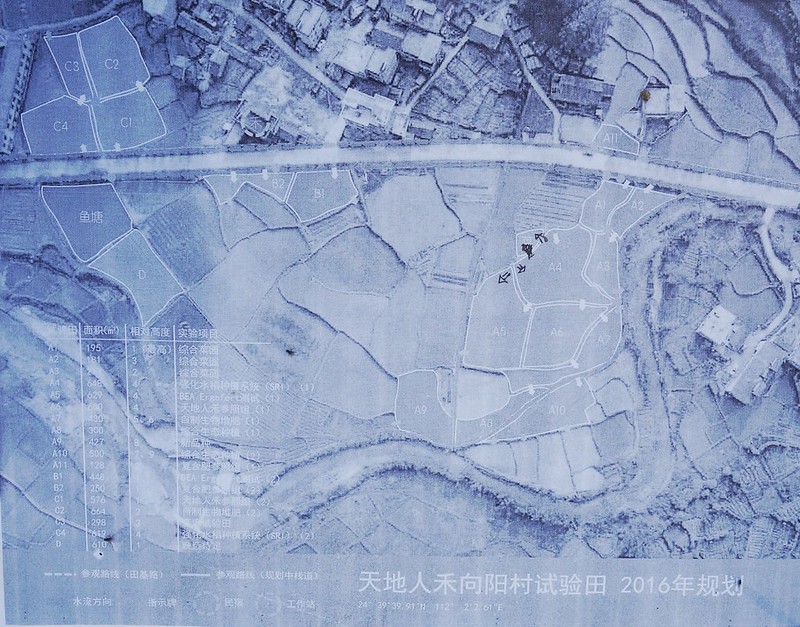One of the highlights of my time in Guangzhou was an opportunity to leave the big city and visit a farm.
Strangely, for an area like the Pearl River Delta that was built on agriculture, it wasn’t easy for me to find a farm. I don’t speak or read Mandarin, and the Great Firewall doesn’t make internet research very easy. Plus it seems that over the last 30 years, massive industrial and housing development has really pushed agriculture out of Guangzhou.
Because of all the other work I’ve been doing on agriculture, I really wanted to feel for myself how farming in southern China is different from Australia, so I kept prodding Hanting (a local Guangzhou artist and our hardworking “fixer”) to “find me a farm!”.
Eventually Hanting’s extensive network came through: her friend Huáng Hé dug up a link to Rice Harmony, and we called them up and arranged a visit.
Here I am at the Guangzhou office of Rice Harmony, where they do their central planning and product distribution. I’m posing with Linda Tan, who is one of the key members of the group:

Linda invited me to come and visit the village where Rice Harmony is collaborating with a network of local farmers. The day after our exhibition launch at Observation Society, I jumped on a provincial bus for a four-hour journey to the town of Qingyuan, where I experienced two extremely interesting days with some of the Rice Harmony people: Linda, Eshya, and Shu Hao.
I was so happy when my view from the bus window changed from this sort of thing:
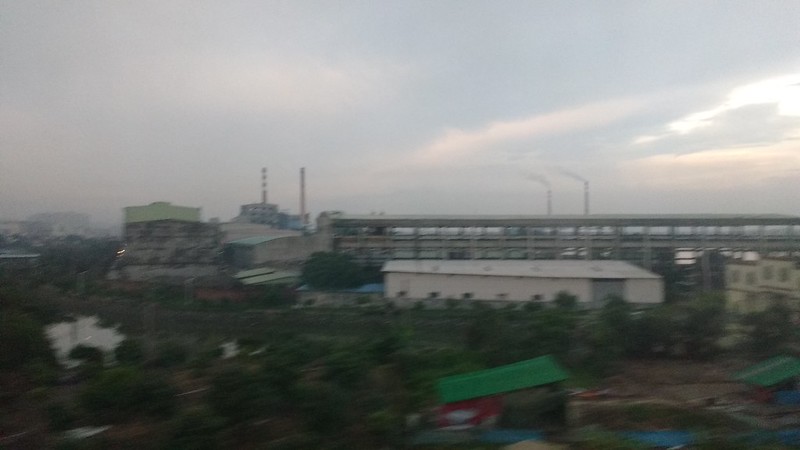
…to this sort of thing:
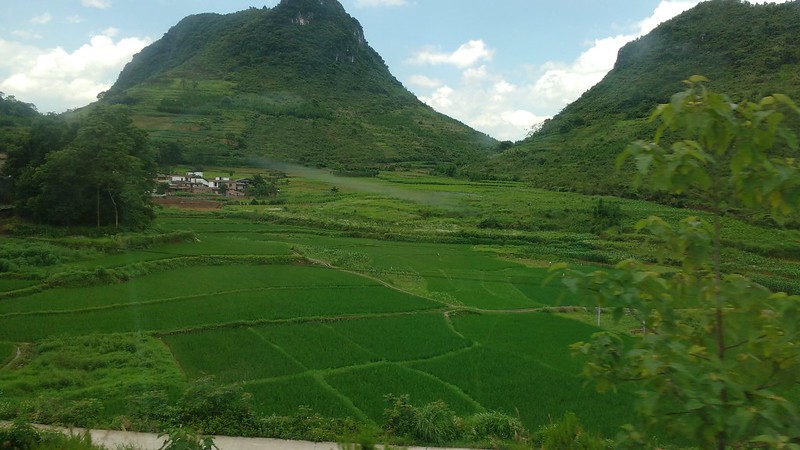
(I know, the comparison between these two pictures isn’t really fair is it? The former image is blurry and with grey skies, and the latter is sharp, with a bright sunny aspect. But there you have it, ya can’t argue with the “aesthetics of nature”!)
Rice Harmony rents a house in a tiny village:
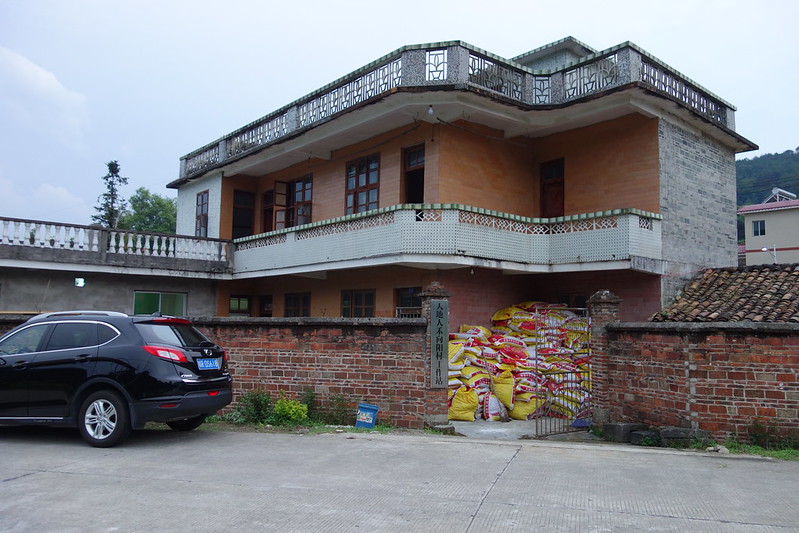
Notice all those yellow and red sacks? They are full of organic fertilizer.
The Rice Harmony team is a social enterprise. Their method is really interesting.
While I hung out with Linda in the fields, we talked through the challenge that the group has set itself: They are a business. There are about 15 employees. They sell rice on behalf of some of the farmers in the village. Their goal is to transform local farming practices to be less reliant on chemicals (fertilizers, pesticides, herbicides).
This is one of the most interesting things that they do: although the Rice Harmony members have no prior experience in growing rice, they are now learning how to do it, with the local farmers as their teachers. They rent a series of un-used rice paddies for this purpose, and Linda has taken on the task with gusto.

In the above photo, the two lovely looking green carpets are Linda’s early experiments in striking rice seedlings. These will soon be transferred and planted out in the field. (Meet “Mike” the scarecrow on the right hand side of the shot).
In Australia, one of the most common issues farmers have to deal with is water – specifically its scarcity. At the moment, there’s no problems with water supply in northern Guangdong. The river gushes through the village, and concrete culverts divert it alongside each rice paddy:
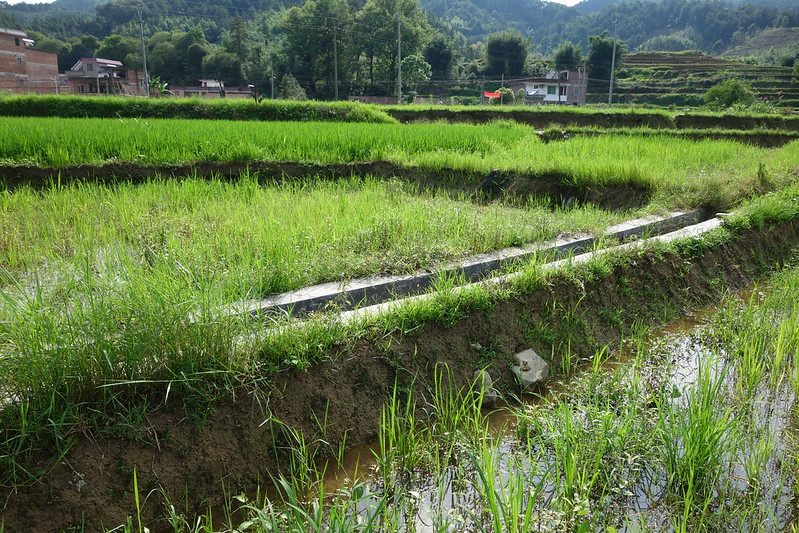
This water is “free” – there are no debates around rationing or “water rights” here. If a farmer wants to flood her paddy, she’ll just stack some rocks and a clod of grass behind a strategically placed hole in the concrete culvert, and and water will flow in.
Playing with water levels in terraced rice fields is quite fun. Linda and I did the rounds of the paddies she’s in charge of. She’s still getting her head around the topography. Depending on how much water you want, you simply build up, or chip away at, the mud walls of each paddy. The tools are ancient: a long handled hoe, and a shovel.
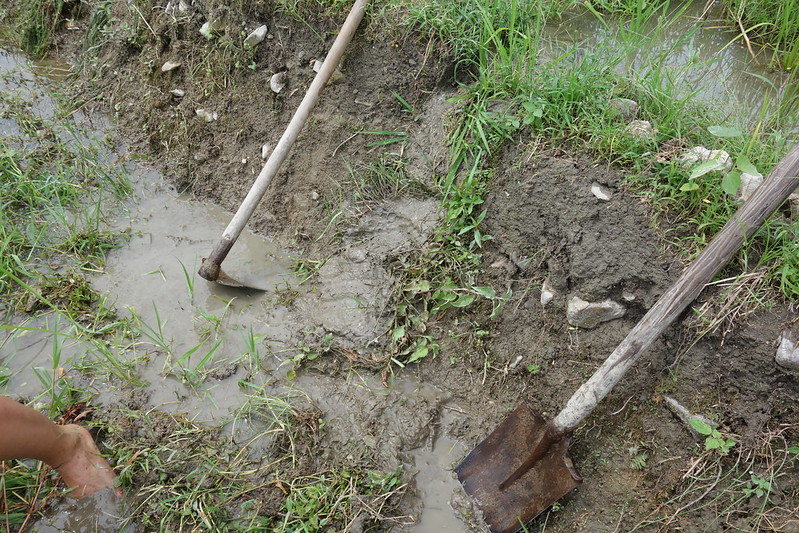
When the water reaches the height of the wall, it flows on into the next paddy down, and so on, eventually making its way back into the river.
Here’s Linda trying to get to the bottom of a hydrology problem (note that building in the background – it’s the old village schoolhouse, now empty):
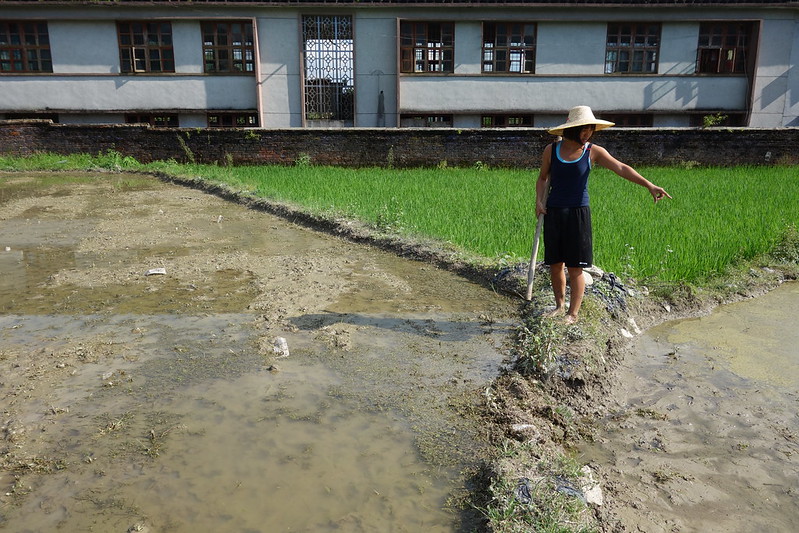
Each paddy has an
“in” and “out” — Linda maps
water + gravity.
Here’s Linda’s map. The fields with white borders are the ones she is working with. You can see from the annotations that Linda has begun to indicate where the water flows (click the map to view it larger):
And here are my feet, feeling the lukewarm wet clay mud of the rice paddy:
I found the Rice Harmony social enterprise method inspirational for these reasons:
- they situate themselves right there within the village (not just fly-in fly-out);
- they demonstrate their intention to learn, thereby honouring the deep knowledge of the local farmers;
- they offer an alternative market to the conventional fertilizer-pesticide rice market, for those farmers who are interested to transition to a chemical-free method.
“Linda and the Mud” is one of three blog posts about my visit to Xiangyang Village in Guangdong.
In the next post, I hang out with ShuHao and go looking for bugs and frogs, and in the third and final post, I accompany Eshya to visit some agricultural bureaucrats, and sip tea with some rice farmers.
This adventure in the rice paddies was brought to you by Guangzhou Delta Haiku.
